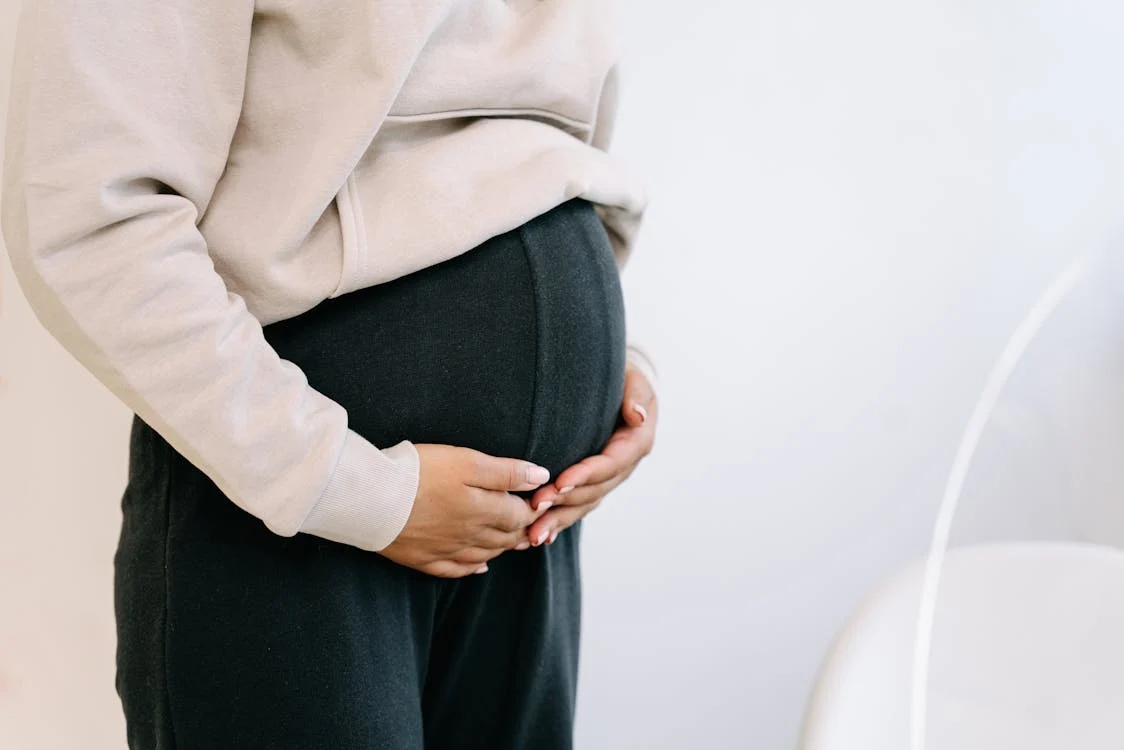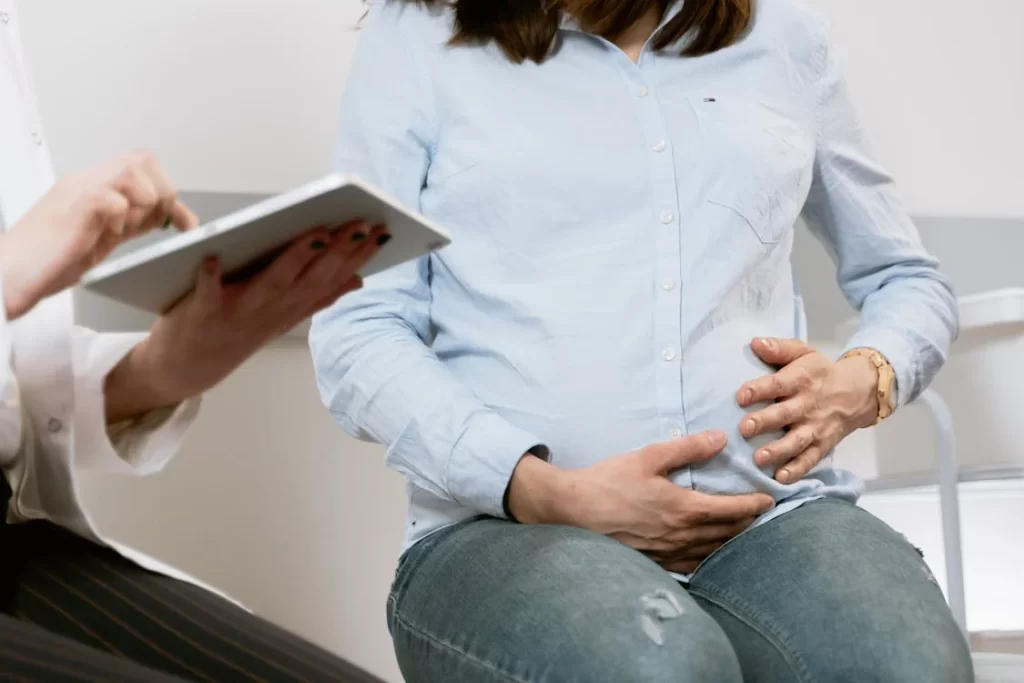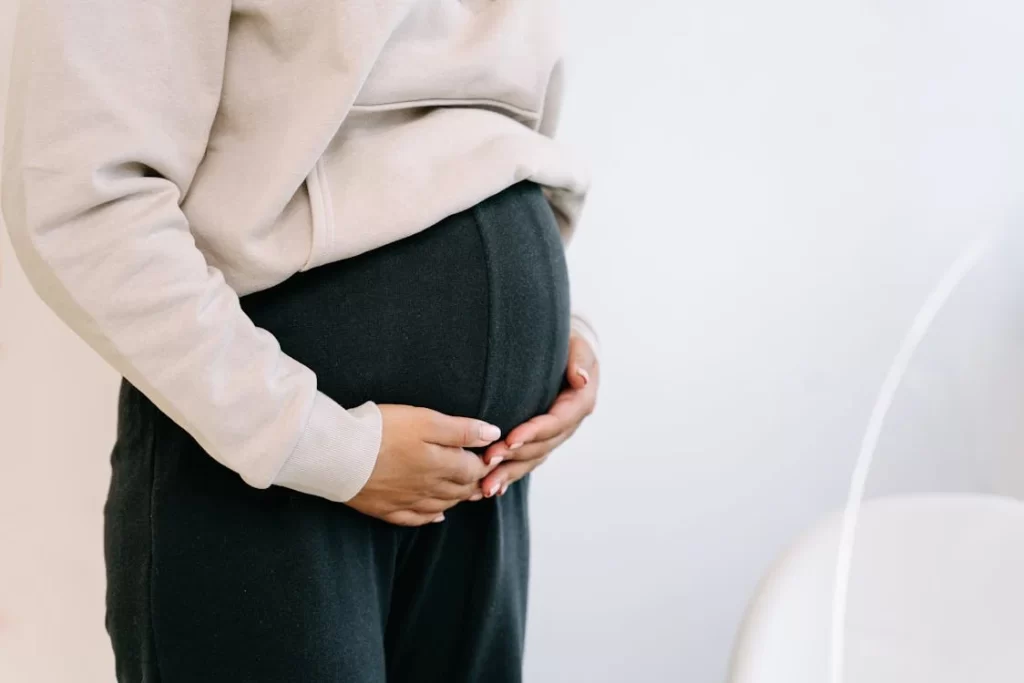Bleeding in Pregnancy: 8 Common Reasons

It might surprise you to learn that bleeding is rather common in pregnancy, especially during the first trimester.
While it can be a sign of a potential problem, it could be caused by another factor. Continue reading to learn about the most common causes of bleeding in pregnancy.
Implantation Bleeding
Implantation bleeding, often referred to as spotting, is common and harmless during early pregnancy. It often occurs when a fertilised egg implants in the womb.
Most women will experience spotting when their period is due, which may cause an expectant mother to believe they’re not pregnant.
A Cervical Change

The cervix will change during pregnancy due to an increased blood supply, which may result in bleeding.
As the cervix will receive more blood than usual, pregnant women are more likely to experience bleeding after sex or a vaginal examination.
While it isn’t often a cause for concern, you shouldn’t hesitate to contact your midwife if you are worried about your baby’s health.
A Miscarriage
Unfortunately, vaginal bleeding can indicate a miscarriage or ectopic pregnancy.
It is important to note that many women who bleed during their first trimester will often have successful pregnancies in the future.
Any pregnancy that ends by the 4th week is referred to as a miscarriage. If a pregnancy ends before 14 weeks, this is often due to a problem with the baby, but it could be a result of a hormone problem or blood clotting.
Tragically, miscarriages are common and will typically occur during the first trimester. In most cases, they cannot be prevented, and it is important not to blame yourself.
Common signs of a miscarriage can include:
- Vaginal bleeding
- Lower abdominal pain or cramping
- Tissue discharge
- Fluid discharge
- Reduced pregnancy symptoms, such as nausea and breast tenderness
It is imperative to contact your midwife or GP immediately if you experience one or more of the above symptoms.
Ectopic Pregnancy
An ectopic pregnancy will occur when a fertilised embryo implants on the outside of a womb. A growing embryo can lead to the bursting of the fallopian tube.
It can be potentially life-threatening to a pregnant woman, as the egg will be unable to fully develop outside the uterus and must be removed with medicine or an operation.
Most people will experience ectopic pregnancy symptoms between 4 to 12 weeks of their pregnancy, but it is possible to experience problems beyond the first trimester.
Common signs of an ectopic pregnancy include:
- Vaginal bleeding or a brown discharge
- Abdominal pain either on one side or low down
- Discomfort during excretion or urination
- Shoulder tip pain
While the above symptoms could be caused by another issue, you should immediately contact your midwife or GP if you experience any of the above symptoms.
A Show
Your midwife will likely discuss “a show” with you as your pregnancy progresses.
Many pregnant women will experience this a few days before contractions start or during labour.
The bleeding is caused by the mucus plug, which seals the cervix, coming away, and it is a sign that labour will soon start.
If you’re unsure how it should look, it often looks like a jelly-like, sticky substance, which may appear pink, clear, or bloody. Also, it may occur in pieces or all at once.
If you suspect you’ve lost your mucus plug before you’re 37 weeks pregnant, you must immediately contact your midwife or another healthcare provider.
Placental Abruption
A placental abruption should not be ignored, as vaginal bleeding can occur when the whole or part of the placenta comes away from the womb wall.
It is typical for pregnant women to experience stomach pain and bleeding, but it can happen without bleeding.
Don’t hesitate to contact your midwife or a doctor if you believe you’re experiencing a placental abruption.
Vasa Praevia
Vasa Praevia is a rare and serious condition caused by a baby’s blood vessels travelling through the membranes that cover the cervix.
If the blood vessels fail to grow properly, there is a risk they will tear before or during labour, causing vaginal bleeding. Unfortunately, this can result in a baby losing a substantial amount of blood.
Again, contact your midwife should you experience vaginal bleeding, even if you don’t have any pain, to protect your and your baby’s health.
Placenta Praevia

Placenta Praevia, often referred to as a low-lying placenta, will occur when the placenta attaches to a lower area of the womb, covering or partially covering the opening of the cervix.
Unfortunately, a low-lying placenta can lead to heavy vaginal bleeding, which can pose a risk to a pregnant mother and her baby’s health.
An expectant mother will need to attend hospital for emergency treatment, and they will likely require a caesarean section.
What to Do if You Experience Vaginal Bleeding
While there might be a perfectly normal explanation for vaginal bleeding, you should not hesitate to contact your midwife or a doctor if you’re concerned for your and your baby’s health.
While vaginal bleeding can be a normal aspect of pregnancy, it can also be a sign of a serious and potentially dangerous problem.
For this reason, you shouldn’t hesitate to contact your midwife or GP for advice and assistance.
NEXT ARTICLE >>> Is Pregnancy Brain Real?





















